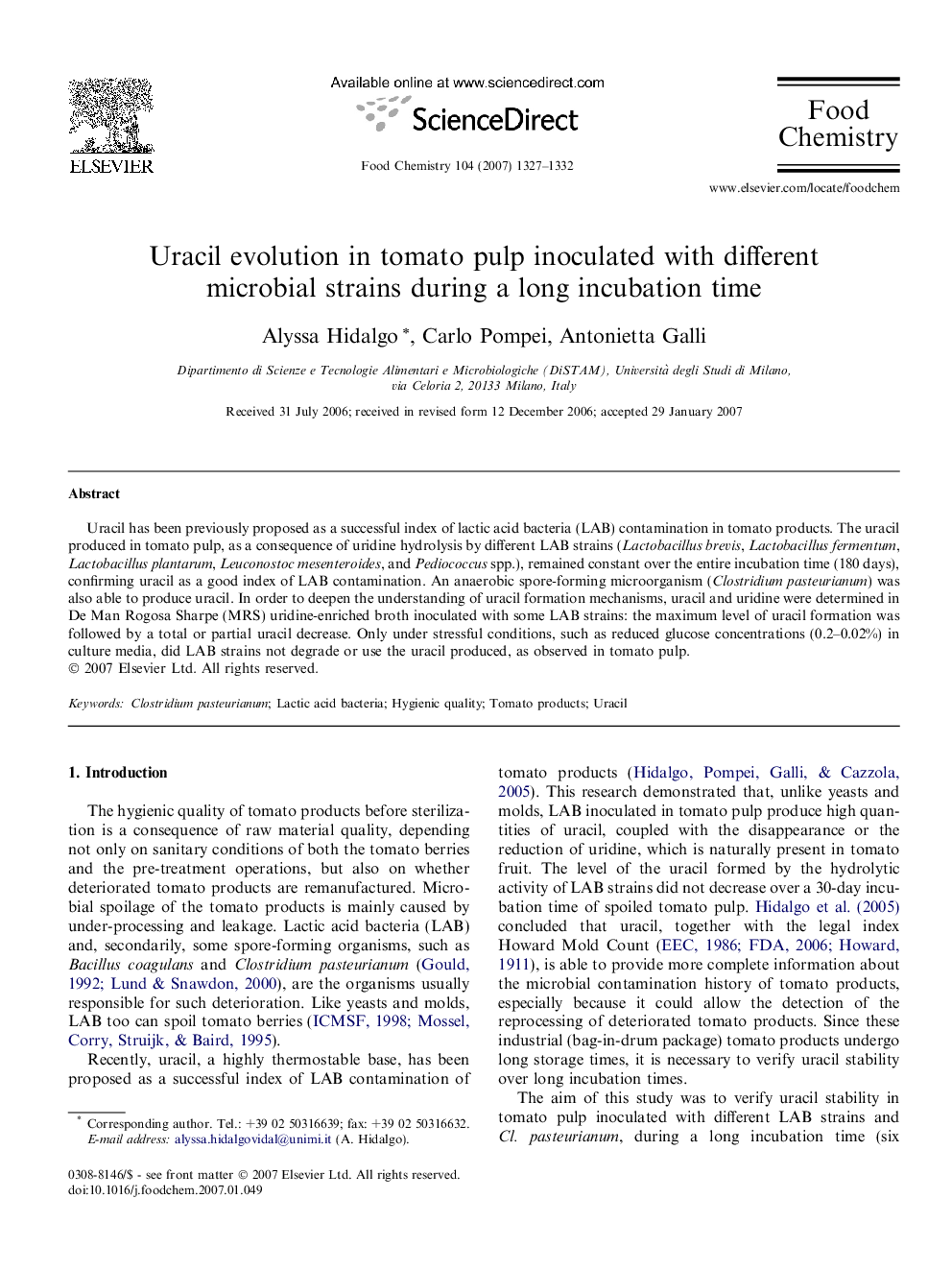| Article ID | Journal | Published Year | Pages | File Type |
|---|---|---|---|---|
| 1187486 | Food Chemistry | 2007 | 6 Pages |
Abstract
Uracil has been previously proposed as a successful index of lactic acid bacteria (LAB) contamination in tomato products. The uracil produced in tomato pulp, as a consequence of uridine hydrolysis by different LAB strains (Lactobacillus brevis, Lactobacillus fermentum, Lactobacillus plantarum, Leuconostoc mesenteroides, and Pediococcus spp.), remained constant over the entire incubation time (180 days), confirming uracil as a good index of LAB contamination. An anaerobic spore-forming microorganism (Clostridium pasteurianum) was also able to produce uracil. In order to deepen the understanding of uracil formation mechanisms, uracil and uridine were determined in De Man Rogosa Sharpe (MRS) uridine-enriched broth inoculated with some LAB strains: the maximum level of uracil formation was followed by a total or partial uracil decrease. Only under stressful conditions, such as reduced glucose concentrations (0.2-0.02%) in culture media, did LAB strains not degrade or use the uracil produced, as observed in tomato pulp.
Related Topics
Physical Sciences and Engineering
Chemistry
Analytical Chemistry
Authors
Alyssa Hidalgo, Carlo Pompei, Antonietta Galli,
